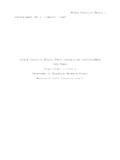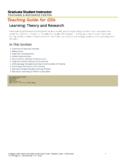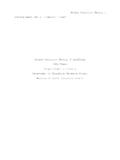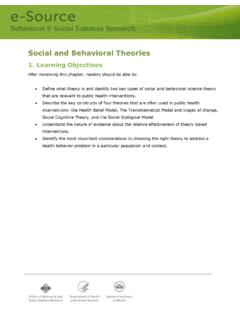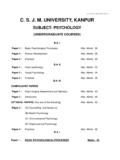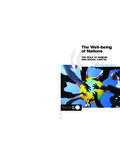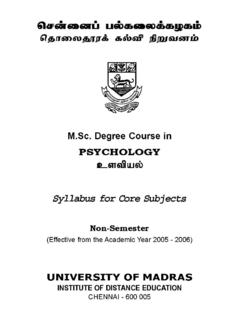Transcription of Developmental and Learning Theories - …
1 1 Developmental and Learning TheoriesGesellFreudEriksonSkinnerBandura VygotskyPiagetGardnerMaslowBronfenbrenne rQuestions Asked Questions asked by educators include: How do children develop? What do children learn and in what order? What affects Learning ? Do all children develop in the same ways? What are the similarities and differences in growth and development? Early Childhood Education draws from several fields of study in order to answer these questions. Educators then apply the finding from research to their classroom Nature of Development The child is a blend of many parts that interrelate in different ways and change with growth over time. Biological processes describe changes in the body. cognitive processes are those changes in one s thought, intelligences and language. Socioemotional processes reflect changes in an individual s relationships with other people, emotions and personality.
2 (Gordon and Browne, pages 130-131).Nature vs Nurture Is a child s development due more to maturation or experience? Heredity versus environment Rousseau Child is born with natural, or innate goodness Locke Tabula rasa Children entered the world with a clean slate on which all experiences and Learning is written Asserted that is was nurture that mattered Educators continue to ask: Is growth smooth and continuous or more stage-like?2 Developmental and Learning Theories Psychodynamic theory Sigmund Freud Psychosocial Erik Erikson Behaviorist theory Skinner cognitive theory Jean Jacques Piaget Sociocultural theory Lev Vygotsky Ecological theory Urie Bronfenbrenner Multiple Intelligences Howard Gardner Maturation theory Arnold Gesell Humanistic theory Abraham MaslowGesellFreudEriksonSkinnerBanduraVy gotskyPiagetGardnerMaslowBronfenbrennerS igmund Freud (1856-1939)Key wordsPsychodynamic; psychosexual; libido; oral stage; anal stage; phallic stage; latency stage; genital stage; id; ego; super-ego; Electra complex; Oedipal complex; conscious; unconscious; psychoanalysisMain pointsExperiences in early childhood influence later development.
3 Assumes sexual factors are major factors, even in early TheoryPersonality Structures Id Basic instincts Ego Mediator Rational part Superego Ideas about moral acceptable behaviorPsychodynamic theory Sigmund Freud believed that the human psyche is made of two basic drives--self-preservation and the libido. The libido was the psychic energy that drives individuals to experience sensual pleasure. This is not limited to sexual pleasure. He believed that humans went through five stages in childhood. If you made it through these stages smoothly you would become a well developed adult. If you dwell to much or too little in any one stage, you might become of Oral Stage is first, lasting from birth to about 1 year. Babies get pleasure from sucking. If you become fixated at this stage you might take up thumb sucking, fingernail biting, and pencil chewing (and maybe drug usage, overeating, verbal fluency).
4 Anal Stage is next, from 1-3 years. Young children enjoy holding in and releasing urine and feces. Your toilet training is a major issue here--if your parents push you to fast or too slow you might become anal retentive. A fixation here will show up either as extreme orderliness and cleanliness, or as extreme messiness and disorder. Phallic Stage lasts from 3-6 years of age. The id impulses focus on the genitals, and the child finds pleasure from genital stimulation. This is about the time you have to worry about Oedipal conflict for boys and Electra conflict for girls. If these are not resolved, you might identify with the 'wrong' sex, and have anger towards the parent of your own sex. Latency Stage lasts from 6-11 years. Not much happens. The child develops the superego. Genital Stage takes place during adolescence. The (ex-)child get pleasure from sex (or at least wants to).
5 With any luck, you pull through this one and settle down into a healthy relationship (marriage, and children of your own).Psychodynamic TheoryFreud s work was heavily criticized for lack of substantial evidence. He regarded basic sexual instincts as being the driving force behind virtually all behaviour. He regarded the development of personality as being the balance between the Id, the Ego and the SuperEgo. The Id strives for unrealistic gratification of basic desires, the SuperEgo strives for unrealistic moral responsibility and conscience while the Ego acts to compromise these two opposing are many unproven aspects to Freud s work, for example Freud theorized that characteristics like generosity or possessiveness were related to childhood factors like parental attitudes to toilet Erikson -1902-1994 Key wordsPsychodynamic; psychosexual; psychosocial; 8 development stages; identity; crises/dilemmasMain pointsDevelops beyond Freud s ideas.
6 More stages (8) and more influence of environmental taught at Harvard and engaged in a variety of clinical work, widening the scope of psychoanalytic theory to take greater account of social, cultural, and other environmental factors. In his most influential work, Childhood and Society (1950), he divided the human life cycle into eight psychosocial stages of for imageBehaviorist theory Behaviorism is America s contribution to psychology. Behaviorism begins with the notion that a child is born with a clean slate, a tubula rasa in John Locke s work, on which event are written throughout life. (Gordon and Browne page 138) Behaviorism is based on observable changes in behavior. Behaviorists insist that only what can actually be observed can be accepted as fact and that only behavior can be treated. Behaviorism focuses on a response to some type of stimulus. The primary theorists involved with behaviorism are John Watson, Edward Thorndike, Skinner and Pavlov and Albert Bandura.
7 HomeGesellFreudEriksonSkinnerBanduraVygo tskyPiagetGardnerMaslowBronfenbrennerIva n Pavlov (1849-1936)Russian Physiologist Known for classical conditioning. The association of involuntary reflexes with other environmental conditions became known as classical conditioning. (Gordon and Browne page 138) Priorto conditioning, he would ring a bell. No response from dog. Placed food in front of dog to initiate salivation. Duringconditioning, bell was rung several seconds prior to presenting dog with food. Afterconditioning, ringing of the bell alone produced salivation in the dog. A spontaneous reaction that occurs automatically to a particular stimulus. To alter the natural relationship between a stimulus and a reaction was viewed as a major breakthrough in the study of B. Watson (1878-1958)American Psychologist and Theorist Studied the animal experiments of Ivan Pavlov.
8 Applied the concepts of classical conditioning to emotional reactions. Believed that the human personality developed through the conditioning of various reflexes. Experimented with infants using a rat to provoke a response. Initially, infant was not afraid of the rat. When the infant touched the rat, Watson created a sudden loud noise. Infant became afraid of noise, which at the same time, he became afraid of the rat. Child remained afraid of rat, even after noise was eliminated from activity. John B. Watson (1878-1958)American Psychologist and Theorist Believed that behaviorism was the mechanism that could provide a foundation for living. He gave scientific validity to the idea that teachers should set conditions for Learning and reward proper responses. (Gordon and Browne page 138) One of Watson's most famous quotes goes as follows: "Give me a dozen healthy infants, well-formed, and my own specified world to bring them up in and I'll guarantee to take any one at random and train him to become any type of specialist I might select -doctor, lawyer, artist, merchant-chief, and, yes, even beggar-man and thief, regardless of his talents, penchants, tendencies, abilities, vocations, and race of his ancestors.
9 "Edward Thorndike (1874-1949)American Psychologist godfather of standardized testing Connectionism establishes a connection between certain stimuli and voluntary behaviors. Invented the puzzle box to investigate how animals such as cats and dogs solve problems. Experimented using baby chicks, dogs, fish, cats, and monkeys. Animal must escape from a confined space to reach food. A latch must be tripped to escape. Animals elicited variety of behaviors prior to tripping latch. Decrease in behaviors and quicker escape time occurred. Association theory was derived from this study. Stimulus-response technique-a stimulus will recall a response is a person; this forms learned habits. (Gordon and Browne page 138) Escape response gradually became associated with the stimulus situation in trial-and-error Learning . -1904-1990 Key wordsOperant conditioning; positive/negative reinforcement; consequence; reward; punishment; respondents; operants; social Learning theory ; behavioural Learning theoryMain pointsReinforcement and punishment moulds behaviour.
10 Children are conditioned by their Frederic Skinner (1904-1990)American Psychologist He took the idea of tabula rasa one step further to create the doctrine of the empty organism. (Gordon and Browne page 138) A person is like a vessel to be filled by carefully designed experiences. (Gordon and Browne page 139) Known for operant conditioning A stimulus is provided A response is generated. Consequence to the response is present. Type of consequence is present. Reinforcement is provided which could be positive or on SkinnerSkinner maintained that Learning occurred as a result of the organism responding to, or operating on, its environment, and coined the term operant conditioning to describe this phenomenon. He did extensive research with animals, notably rats and pigeons, and invented the famous Skinner box, in which a rat learns to press a lever in order to obtain Bandura -1925-currentKey wordsImitation; copying; modelling; role models; reinforcement; social Learning theory ; observational theory (social cognitive theory ); Bobo doll pointsLearning takes place by imitation.

